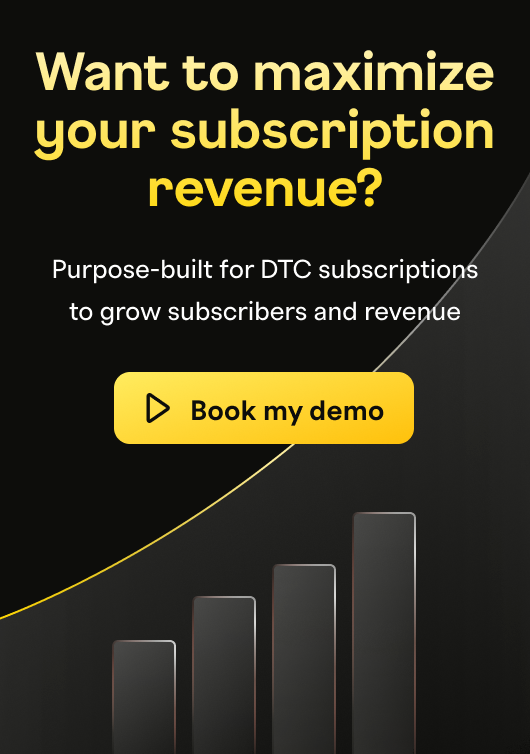Your global strategy isn't ready. Here's why.

You’ve got the product. You’ve found market fit. Now, your eyes are on the global prize.
You’re thinking about payment gateways. You’re localizing your checkout page. You’re translating your marketing copy. That's a great start. But it's not enough.
The biggest threat to your international expansion isn't what you're thinking about. It's the silent, complex, and rapidly-changing world of tax and invoice compliance. And most subscription businesses are dangerously unprepared for it.
I've spent my career in the trenches of subscription commerce, building the infrastructure that lets businesses scale across borders. I’ve seen firsthand how an elegant growth strategy can be brought to its knees by a single, non-compliant invoice.
Let’s change your perspective. Going global isn’t just a sales or marketing challenge. It’s an infrastructure challenge. And the foundation of that infrastructure — the part that determines whether you scale smoothly or stumble over audits and fines — is your approach to tax and invoicing.
The new reality: Compliance is a moving target
For years, the global expansion playbook was simple: find a payment processor that accepts local cards and currencies, and you were off to the races. That world is gone.
Today, governments are more sophisticated. They’re more aggressive. And they’re looking directly at the booming digital economy as a primary source of revenue. This has triggered an explosion in regulatory complexity that legacy billing systems were never designed to handle.
We’re not just talking about Value-Added Tax (VAT) or Goods and Services Tax (GST) anymore. The landscape now includes a patchwork of new, country-specific rules:
The rise of Digital Services Taxes (DSTs): Countries from France to India to the United Kingdom have implemented DSTs targeting revenue from digital activities. These aren't consumption taxes; they are often revenue taxes with unique calculation rules and reporting requirements, adding another layer of complexity on top of VAT/GST.
Shifting tax thresholds: When do you need to register to collect and remit tax in a new country? The answer is constantly changing. The European Union’s €10,000 pan-EU threshold for digital goods is just one example. Exceed it, and you’re suddenly responsible for managing the specific VAT rates for every EU country you sell into.
The velocity of change: These rules aren’t set in stone. They change. New tax rates are announced quarterly. New regulations are passed every year. Relying on a static spreadsheet or manual processes to manage this is a high-stakes gamble.
The core takeaway is this: managing global tax is no longer a simple, one-time setup. It’s a real-time data problem. Your ability to grow depends on your ability to ingest, interpret, and apply these ever-changing rules to every single transaction, automatically and accurately.
Invoices: The unseen battleground for global compliance
So, where does this complexity come to a head? It’s not on your pricing page. It’s on the invoice.
Most businesses think of an invoice as a simple receipt — a record of a transaction. But in a global context, an invoice is a legally binding document subject to intense scrutiny from tax authorities. Getting it wrong is the fastest way to fail an audit, incur penalties, and damage customer trust.
The danger lies in the details — the small, country-specific requirements that most billing systems completely ignore.
The e-invoicing mandate tsunami
The most significant trend you’re probably not tracking is the global move towards mandatory electronic invoicing (e-invoicing). This isn't just about sending a PDF instead of paper. E-invoicing requires businesses to issue invoices in a specific electronic format (like XML) and submit them directly to government tax portals — often in real-time.
Why are governments pushing this? For total visibility. It allows them to pre-validate transactions, automate tax collection, and clamp down on fraud.
Consider the global landscape:
In Italy, the FatturaPA system is already the law of the land for B2B and B2C transactions
India’s GST regime requires e-invoicing for businesses above a certain revenue threshold
Across the European Union, the upcoming VAT in the Digital Age (ViDA) initiative will phase in mandatory e-invoicing and real-time digital reporting for cross-border transactions
If your subscription platform can't generate these specific formats or integrate with government portals, you will be, quite simply, blocked from doing business in these markets.
The tyranny of a single number
Here’s a detail that trips up even the most sophisticated companies: sequential invoice numbering. It sounds trivial, but tax authorities in many countries mandate that a legal entity issues invoices in a single, unbroken chronological sequence.
Now think about your business: Do you run multiple product lines? Do you have a separate system for one-time charges? Do you use different platforms for different regions? If each of these systems generates its own invoice numbers, you’ve already broken the sequence. You’re out of compliance.
An auditor will spot this in minutes. Reconciling this discrepancy retroactively is an accounting nightmare. The only solution is a centralized billing platform that acts as the single source of truth for every invoice number issued across your entire business.
Data, format, and function
Beyond sequencing, the data and format required on an invoice vary dramatically by country. For example:
A B2B invoice in Brazil requires the customer’s federal taxpayer registry number (CPF or CNPJ) — without it, the invoice is invalid
In the EU, if you issue a credit note to refund a customer, it must reference the original invoice number it relates to
Tax rates can depend on the customer's status (B2B vs. B2C) and location, requiring robust evidence of location data (like IP address and billing address) to be stored and sometimes even displayed.
Your billing system can't treat an invoice as a generic template. It must be a dynamic document, intelligently assembled with the precise data, formatting, and tax information required by the buyer’s jurisdiction at the exact moment of the transaction.
Your blueprint for a global-ready infrastructure
Viewing this challenge through a product lens reveals a clear path forward. You wouldn't build a core feature on unstable, fragmented code. Don't build your global revenue engine on a shaky, disconnected compliance foundation.
1. Make compliance a product priority, not a finance problem
The single most important shift is to move ownership of tax and invoice compliance out of a silo in the finance department and into your core product and engineering strategy.
Why? Because a non-compliant invoice is a product failure. It creates a terrible customer experience. Imagine a B2B customer in Germany being unable to claim their VAT refund because your invoice is missing required information. You haven't just created an accounting issue for them; you've broken their trust in your service.
Treating compliance as a product feature forces you to ask the right questions:
Does our billing experience inspire trust for a global user?
Can we dynamically generate an invoice that is 100% compliant for a customer in Japan, then another one for a customer in Canada, seconds later?
How do we manage the customer experience when tax rules change?
2. Architect for integration and automation
You cannot manually manage this level of complexity at scale. The only viable path is a tightly integrated, automated system. This is what a best-in-class global commerce stack looks like:
A subscription management platform (the core): This is your central nervous system. It manages the subscriber lifecycle, plans, pricing, and the cadence of recurring billing. This should be your single source of truth for all revenue-related data.
A global tax engine (the brain): This system connects to your subscription platform. Its sole job is to maintain a real-time database of every tax rule, rate, and threshold on the planet. When a transaction occurs, the subscription platform makes a call to the tax engine, which instantly returns the correct tax calculation based on the product type and customer location.
A compliant invoicing layer (the voice): This is the crucial, often-overlooked layer. The subscription platform takes the core transaction data and the correct tax calculation and generates a legally compliant invoice — complete with the right format, sequential number, and country-specific data fields.
Attempting to stitch together three separate systems that weren't designed to work together will inevitably create gaps. Data gets lost. Logic breaks. This is why, at Recurly, we’ve built our platform with native integrations to leading tax engines and designed our invoicing system to handle these precise global complexities. It’s not an add-on; it's part of the core architecture.
3. Map your compliance strategy before you launch
Don’t wait until you’re ready to enter a new market to think about its regulations. Build compliance research directly into your market expansion planning. Alongside your analysis of product-market fit and competitive landscape, you should be mapping the specific compliance requirements:
What are the tax registration thresholds?
What are the local invoicing rules (e.g., e-invoicing, sequencing, data requirements)?
Are there specific data privacy or residency laws to consider?
Answering these questions early transforms compliance from a reactive panic into a strategic advantage. It informs your go-to-market timeline, your pricing, and the very architecture of your system.
The future is global
The paradigm of global expansion has fundamentally changed. Success is no longer defined by your ability to simply process a payment. It's defined by your ability to navigate a complex, shifting web of global regulations with precision and agility.
The world’s fastest-growing subscription companies understand this. They don't see tax and invoicing as a cost center or a back-office chore. They see it as a core component of their product — a feature that enables trust, reduces friction, and unlocks sustainable growth.
The path to global leadership is paved with compliant invoices. Start building your infrastructure for where your business is going, not just for where it is today.

